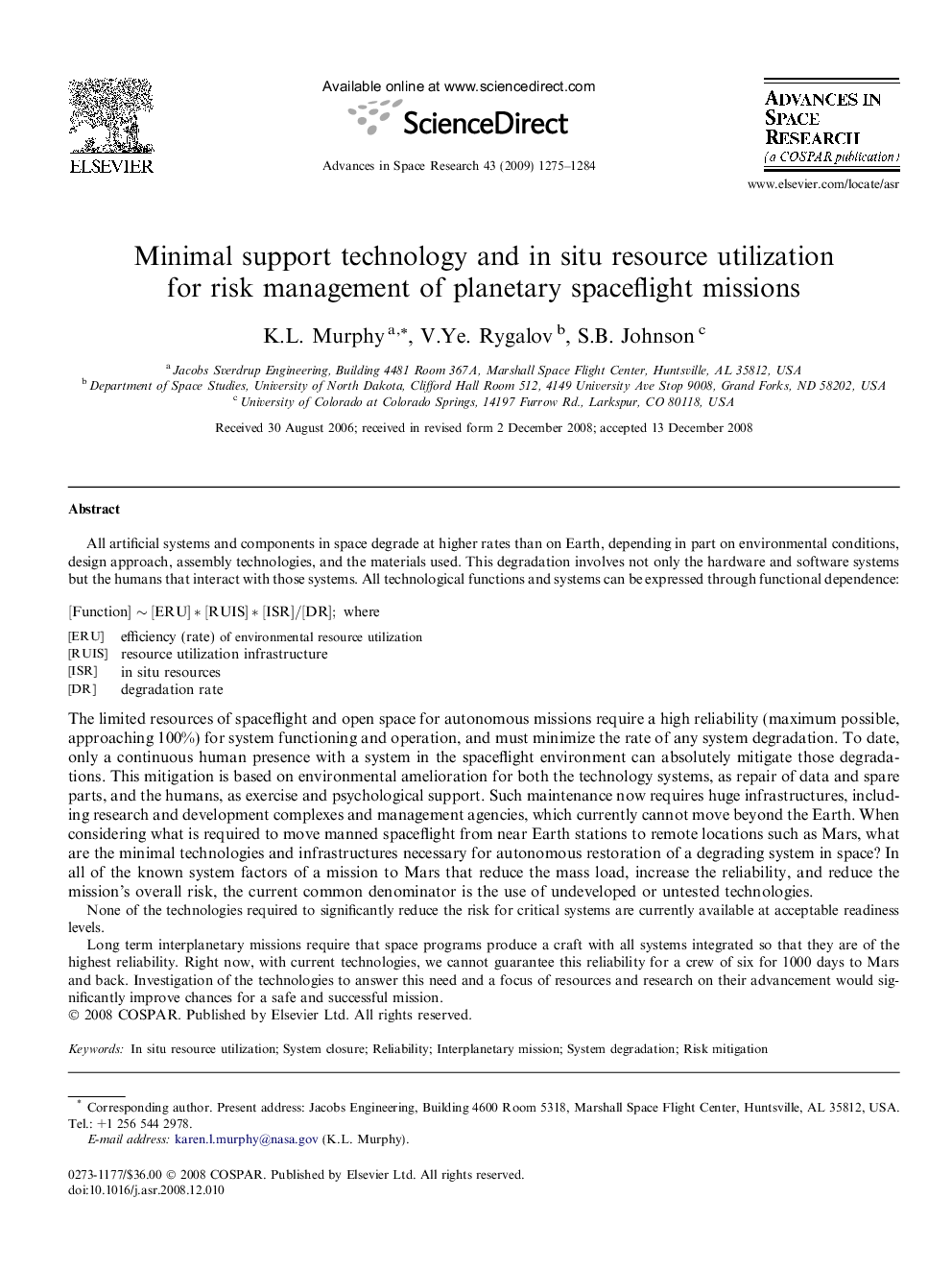| کد مقاله | کد نشریه | سال انتشار | مقاله انگلیسی | نسخه تمام متن |
|---|---|---|---|---|
| 1765708 | 1020115 | 2009 | 10 صفحه PDF | دانلود رایگان |

All artificial systems and components in space degrade at higher rates than on Earth, depending in part on environmental conditions, design approach, assembly technologies, and the materials used. This degradation involves not only the hardware and software systems but the humans that interact with those systems. All technological functions and systems can be expressed through functional dependence:[Function]∼[ERU]∗[RUIS]∗[ISR]/[DR];where[ERU]efficiency (rate) of environmental resource utilization[RUIS]resource utilization infrastructure[ISR]in situ resources[DR]degradation rateFull-size tableTable optionsView in workspaceDownload as CSVThe limited resources of spaceflight and open space for autonomous missions require a high reliability (maximum possible, approaching 100%) for system functioning and operation, and must minimize the rate of any system degradation. To date, only a continuous human presence with a system in the spaceflight environment can absolutely mitigate those degradations. This mitigation is based on environmental amelioration for both the technology systems, as repair of data and spare parts, and the humans, as exercise and psychological support. Such maintenance now requires huge infrastructures, including research and development complexes and management agencies, which currently cannot move beyond the Earth. When considering what is required to move manned spaceflight from near Earth stations to remote locations such as Mars, what are the minimal technologies and infrastructures necessary for autonomous restoration of a degrading system in space? In all of the known system factors of a mission to Mars that reduce the mass load, increase the reliability, and reduce the mission’s overall risk, the current common denominator is the use of undeveloped or untested technologies.None of the technologies required to significantly reduce the risk for critical systems are currently available at acceptable readiness levels.Long term interplanetary missions require that space programs produce a craft with all systems integrated so that they are of the highest reliability. Right now, with current technologies, we cannot guarantee this reliability for a crew of six for 1000 days to Mars and back. Investigation of the technologies to answer this need and a focus of resources and research on their advancement would significantly improve chances for a safe and successful mission.
Journal: Advances in Space Research - Volume 43, Issue 8, 15 April 2009, Pages 1275–1284